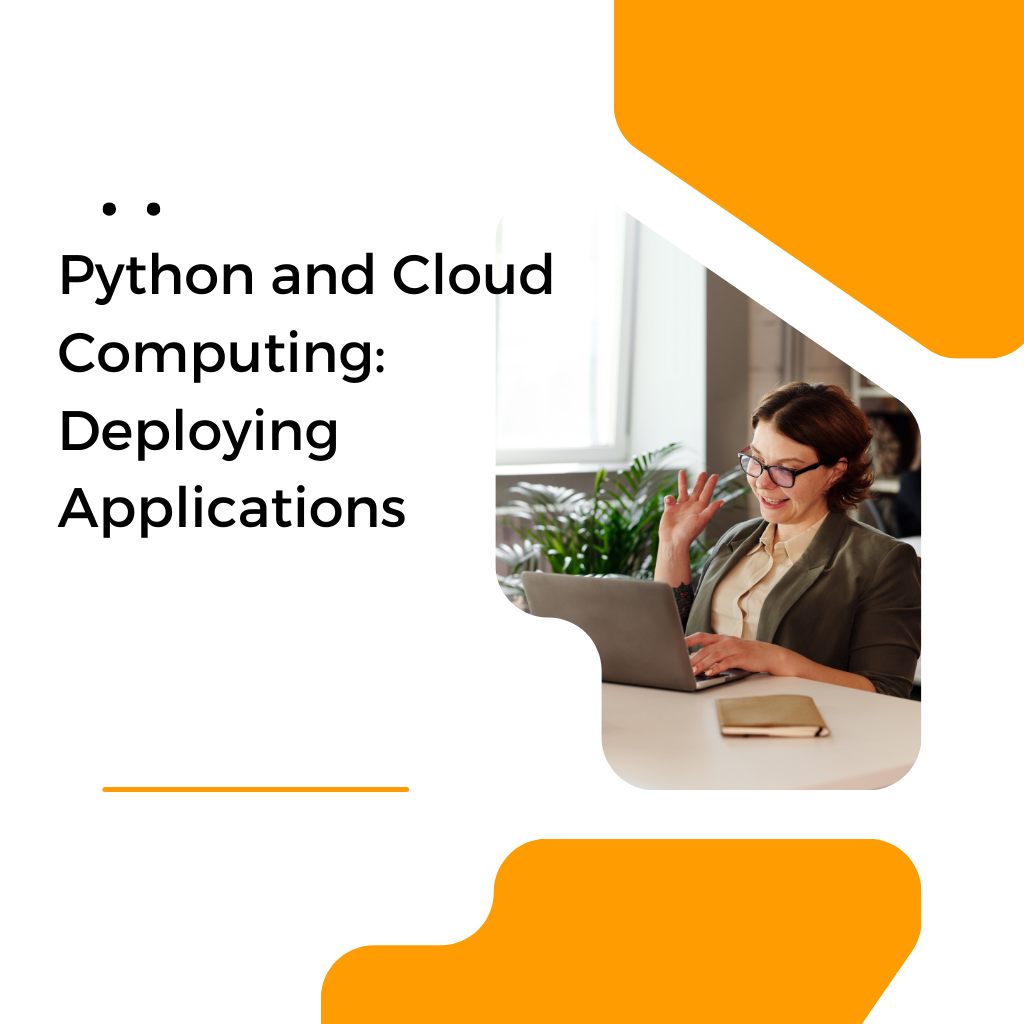Introduction
In recent years, cloud computing has revolutionized the way applications are developed, deployed, and scaled. Python, with its versatility and rich ecosystem, has become a prominent language in the cloud computing landscape. This article delves into the synergy between Python and cloud computing, focusing on how developers can leverage Python for deploying applications seamlessly in various cloud environments.
The Rise of Cloud Computing
Cloud computing offers a scalable and cost-effective solution for hosting applications and services. Instead of investing in physical hardware and infrastructure, developers can leverage the power of the cloud to deploy, manage, and scale their applications dynamically. This paradigm shift has transformed the IT landscape, and Python plays a pivotal role in this transformation.
Python’s Role in Cloud Deployment
1. Compatibility and Portability:
Python’s platform-agnostic nature makes it an ideal choice for cloud deployment. Whether you choose Amazon Web Services (AWS), Microsoft Azure, Google Cloud Platform (GCP), or other cloud providers, Python applications can seamlessly transition across these platforms, reducing vendor lock-in concerns.
2. Extensive Libraries and Frameworks:
Python boasts a vast ecosystem of libraries and frameworks that facilitate various tasks in cloud deployment. Popular frameworks like Flask and Django simplify the development of web applications, while libraries such as Boto3 empower developers to interact effortlessly with AWS services using Python.
Deploying Python Applications in the Cloud
1. Containerization with Docker:
Docker has emerged as a game-changer in cloud deployment. Python applications can be encapsulated into Docker containers, ensuring consistency across different environments. This approach facilitates easy deployment, scalability, and version control of applications in the cloud.
2. Orchestration with Kubernetes:
For managing containerized applications at scale, Kubernetes provides a robust solution. Python developers can use Kubernetes to orchestrate and automate the deployment, scaling, and operation of application containers, promoting a resilient and self-healing infrastructure.
3. Serverless Computing:
Serverless computing allows developers to focus solely on writing code without managing the underlying infrastructure. Python, with its lightweight and fast execution, is well-suited for serverless architectures. Platforms like AWS Lambda and Azure Functions enable Python developers to deploy code in response to events, eliminating the need for server maintenance.
Cloud Deployment Best Practices
1. Infrastructure as Code (IaC):
Adopting Infrastructure as Code principles allows developers to define and manage infrastructure using code. Tools like Terraform and AWS CloudFormation enable the provisioning of cloud resources in a repeatable and automated manner. Python scripts can be integrated seamlessly into these workflows, enhancing the provisioning process.
2. Continuous Integration and Continuous Deployment (CI/CD):
Implementing CI/CD pipelines streamlines the process of deploying and updating applications. Python’s popularity extends to CI/CD tools like Jenkins, GitLab CI, and GitHub Actions, allowing developers to automate testing, build, and deployment processes.
3. Monitoring and Logging:
Effective monitoring and logging are critical in cloud deployment. Python supports integration with monitoring tools such as Prometheus and Grafana, enabling developers to gain insights into application performance, detect issues, and troubleshoot effectively.
Deploying a Python Flask Application on AWS
To illustrate the concepts discussed, let’s walk through deploying a simple Python Flask application on AWS using Elastic Beanstalk. Elastic Beanstalk abstracts away the infrastructure details, allowing developers to focus solely on their code.
-
Application Setup:
- Develop a Flask application.
- Create a
requirements.txtfile specifying dependencies.
-
Elastic Beanstalk Configuration:
- Install the AWS CLI and Elastic Beanstalk CLI.
- Run
eb initto set up the Elastic Beanstalk environment. - Customize the environment settings in the generated
ebextensionsfolder.
-
Deployment:
- Run
eb createto deploy the application. - Elastic Beanstalk handles the provisioning of resources and deploys the application.
- Run
-
Scaling:
- Use the Elastic Beanstalk console or CLI to scale the application based on demand.
Conclusion
The synergy between Python and cloud computing forms a powerful alliance, empowering developers to innovate and deliver robust solutions in an ever-changing technological landscape. This holds true not only in global tech hubs but also in cities like Aligarh, Delhi, Noida, Lucknow, and other locations across India. As organizations in these cities increasingly embrace cloud-native approaches, the demand for professionals skilled in Python’s role in cloud deployment is set to grow.
For individuals in Online Python Course in Aligarh , Delhi, Noida, Lucknow, and other cities in India,becomes a strategic move. These courses provide a gateway for learners to master Python’s intricacies and understand its seamless integration with cloud technologies.














